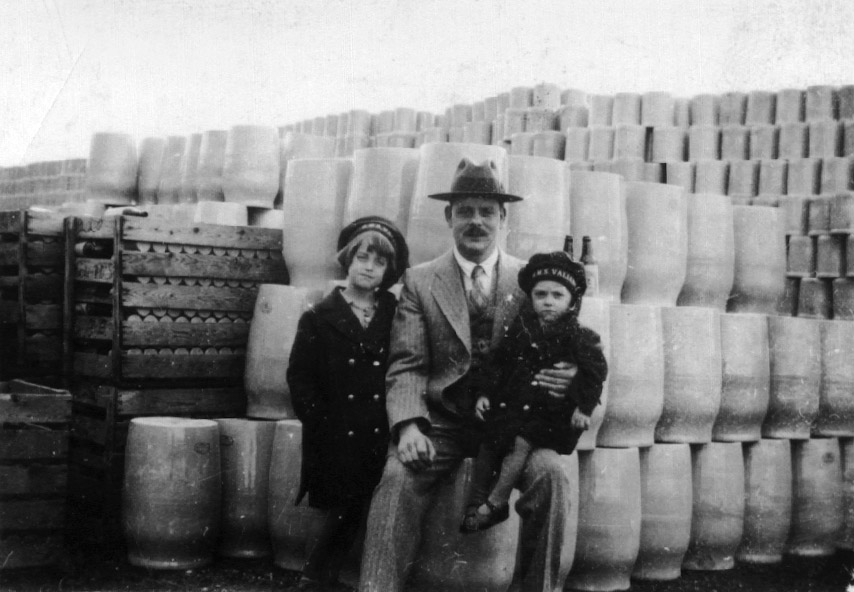Jessie Wyatt
Jesse William Wyatt who took over as plant superintendent at Medalta Potteries in late 1924. He undertook his apprenticeship in Bristol, England where he had learned all aspects of the trade from the front line duties of designing, mould-making, jiggering and preparing glazes, through to the construction of the kilns and the firing of the wares. He was the most skilled pottery man that Medalta had ever hired.
One of the first things Wyatt did was convert the old American wine measure crocks to larger ones measured in British Imperial gallons. Thousands of old moulds were discarded as the new ones came on stream, and by February 1927, Medalta was actively promoting the new line. He designed hundreds of new products, adding many new sizes to well-established lines (e.g. forty and fifty-gallon crocks, a fifteen-pound butter crock, a ten-gallon butter churn, pigeon and canary nests, dog and rabbit feeders, seal top jars, tobacco jars, ashtrays and a cracker box. And he replaced the old styles of mixing bowls, pitchers and teapots with new attractive styles in a variety of bright colours.
By 1929 Wyatt introduced artware at Medalta, a major shift in its production. He hired the young Tom Hulme from England. Tom organized the needed supplies and equipment, selected decorations, prepared stencils and trained staff while Bill Wyatt made the moulds for the new art line.
That same year, antagonized by the new manager Walter Armstong, Wyatt left and, with his two sons, set up his own pottery in Redcliff. By 1931, Wyatt’s Alberta Potteries Limited was up and running in an old automobile plant, thanks to help from the town and investments by ranchers in the area. With one kiln, second-hand equipment, little money and about fifteen patient and hard-working men they were open for business by 1931. They made products similar to Medalta’s most popular items, but at lower prices (e.g. crocks, butter churns and tubs, mixing bowls in six styles). Items displaying their attractive “beaver” trademark are now collectable and prized over the relatively plain Medalta ones. They also produced chicken fountains, spittoons, bean pots, pudding bowls, meat pie pans, casseroles, custard cups, barrel-shaped cookie jars, at least six different styles of pitchers, two ashtray styles, three styles of teapots and even flower pots. Wyatt even tried to compete with Medalta for the advertising and artware markets.
Even though Jesse Wyatt had expanded by adding a second kiln, money was just too tight during the Depression. By 1936 Jesse Wyatt had had enough; he sold his pottery and returned to eastern Canada with his son Bill to join his son Bert who had already headed east in 1933 to work at Sovereign Potteries in Hamilton. Bill worked at a lamp base factory until 1937, then he to joined Sovereign. Jesse began at an electrical porcelain company called Smith & Stone in Georgetown, Ontario and worked there until he retired at the age of 78.
Copyright rongetty.com, All Rights Reserved
Login - 216.73.216.38

